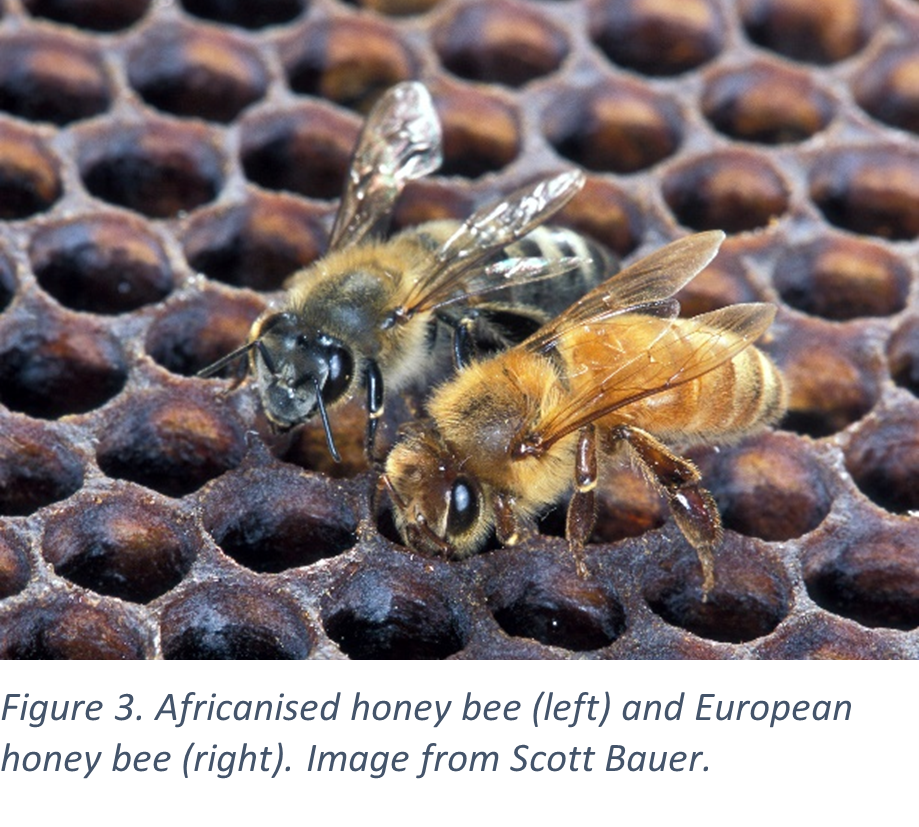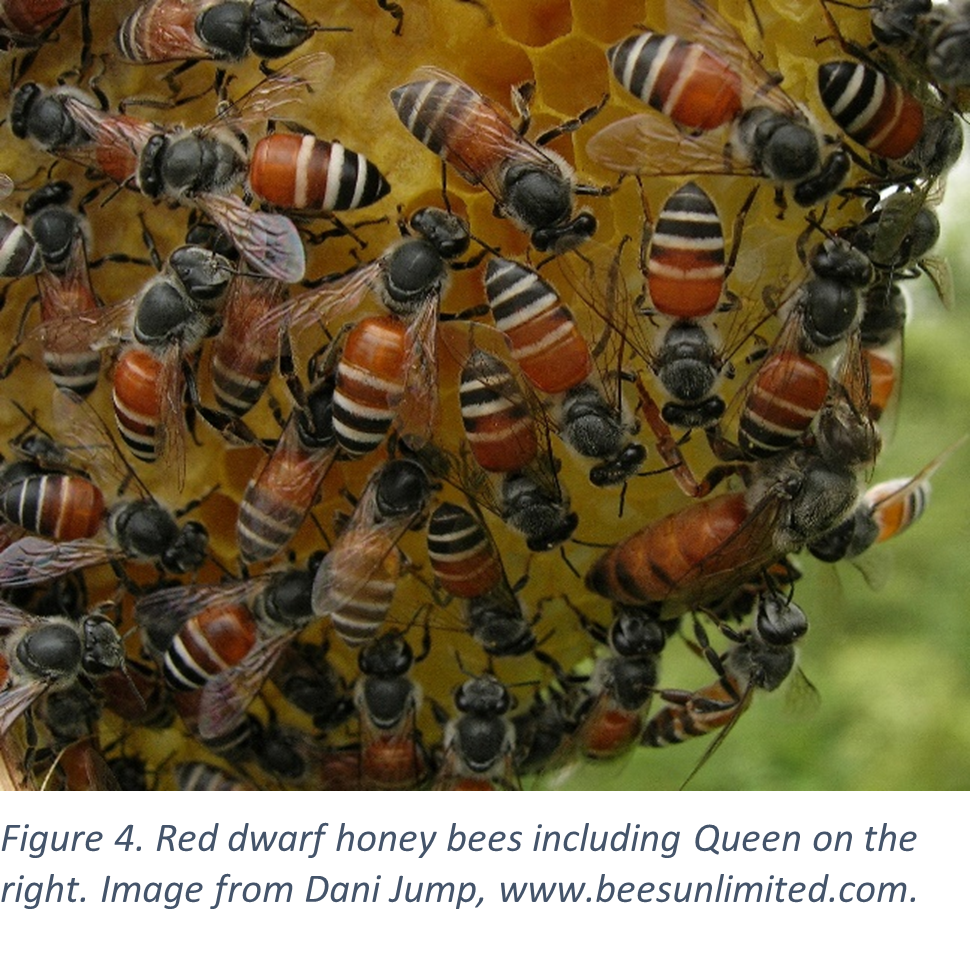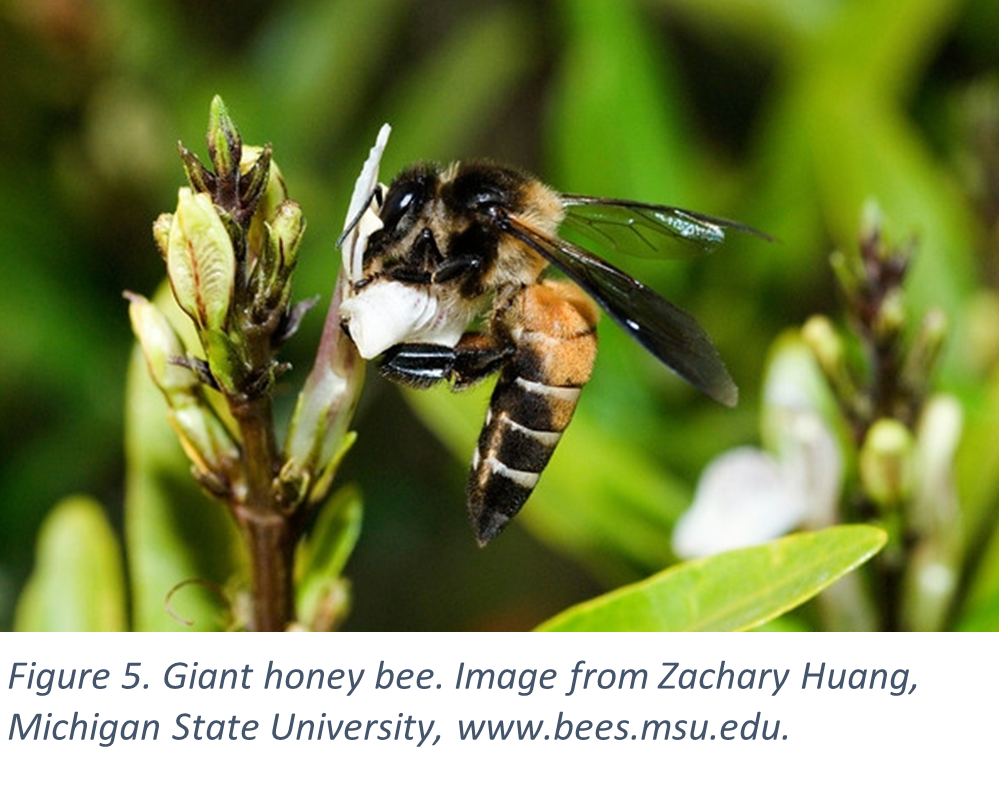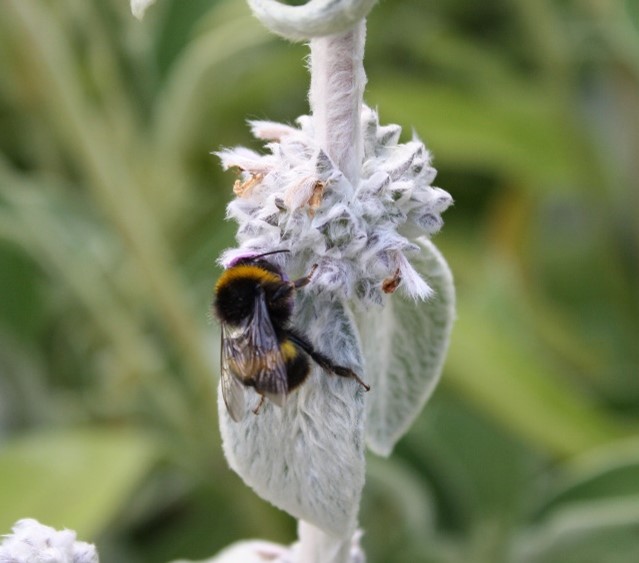Bee Aware of Exotic Bees
22 May 2023Dave Schlipalius, Bee Biosecurity Officer, Biosecurity Queensland, Queensland Department of Agriculture and Fisheries. No one knows bees better than beekeepers. This makes beekeepers the perfect eyes and ears for detecting […]
Dave Schlipalius, Bee Biosecurity Officer, Biosecurity Queensland, Queensland Department of Agriculture and Fisheries.
No one knows bees better than beekeepers. This makes beekeepers the perfect eyes and ears for detecting exotic bees. Exotic bees pose a biosecurity risk, as they would compete for resources with Australian native bees and European honey bees, as well as potentially bringing a range of pests and diseases which could affect our bees.
Beekeepers and bee enthusiasts alike play an important role in the early detection of exotic bee species, by knowing what the key exotic species look like and reporting any suspicious bees.
There are five exotic bee species that are of major biosecurity concern to Australia and a couple of subspecies that cause problems for beekeepers. On first glance these bees can look a lot like European honey bees but there are differences if you know what to look for. Key features of European honey bees and exotic bee species are outlined below.
European honey bees (Apis mellifera)

European honey bees can be quite variable in appearance depending on their genetic backgrounds. This can make it difficult to identify closely related bees.
Asian honey bees (Apis cerana)
Asian honey bee is the most likely exotic bee species that could be encountered in Australia. While Asian honey bee has established in parts of North Queensland, it is still considered exotic and reportable elsewhere in Australia. Asian honey bees can carry exotic mite species so it is important to report them when found outside the known infested area. Their swarming behaviour means they are more likely to be found on cargo or vehicles moving longer distances.
Size: Asian honey bees are smaller than European honey bees, coming in at 10 mm long while European honey bees are usually about 13-16 mm long.
Appearance: Asian honey bees have evenly spaced, distinct yellow and black bands on their abdomen, while the bands on European honey bees tend to be variable in size, less regular and often with indistinct edges. Asian honey bees are also less hairy than European honey bees.
Behaviour: Swarms of Asian honey bees have fewer bees and they swarm more frequently than European honey bees. Asian honey bees tend to sting less.
Cape honey bees (Apis mellifera capensis)
 Cape honey bees look very similar to European honey bees because they are very closely related. The main differences between Cape honey bees and European honey bees are behavioural. This can make them difficult to detect in European honey bee hives. One of the distinctive characteristics of Cape honey bees is the ability of worker bees to lay worker eggs without mating, enabling these workers to turn into pseudo-queens, this helps them move into established hives of European honey bees and slowly take them over. The egg-laying workers do not forage as much, and this reduces the host hive’s productivity and often weakens the hive until the original queen dies. Once the original queen dies, Cape honey bees then move on to infest another hive. This phenomenon is described as ‘social parasitism’.
Cape honey bees look very similar to European honey bees because they are very closely related. The main differences between Cape honey bees and European honey bees are behavioural. This can make them difficult to detect in European honey bee hives. One of the distinctive characteristics of Cape honey bees is the ability of worker bees to lay worker eggs without mating, enabling these workers to turn into pseudo-queens, this helps them move into established hives of European honey bees and slowly take them over. The egg-laying workers do not forage as much, and this reduces the host hive’s productivity and often weakens the hive until the original queen dies. Once the original queen dies, Cape honey bees then move on to infest another hive. This phenomenon is described as ‘social parasitism’.
Size: Similar in size, but often reported as slightly smaller than European honey bees.
Appearance: Very similar to European honey bees.
Behaviour: While Cape honey bees are more docile than European honey bees they are also more flighty when a nest is approached; ability of worker bees to lay eggs and social parasitism.
Africanised honey bees (Apis mellifera mellifera, A. m. carnica, A. m. caucasi or A. m. ligustica x A. m. scutellate)
 While Africanised honey bees are generally smaller than other European honey bees, they are difficult to distinguish based on their physical appearance alone. The key difference is their extremely high tendency for stinging when disturbed. Once alerted, swarms of Africanised honey bee can be difficult to escape and they continue stinging intruders for hundreds of metres away from their hive.
While Africanised honey bees are generally smaller than other European honey bees, they are difficult to distinguish based on their physical appearance alone. The key difference is their extremely high tendency for stinging when disturbed. Once alerted, swarms of Africanised honey bee can be difficult to escape and they continue stinging intruders for hundreds of metres away from their hive.
While it is unlikely that Africanised honey bees would arrive in Australia unnoticed, their propensity for swarming means they are capable of hitchhiking in shipping containers. Any bee swarms that have extreme stinging behaviour should be reported, as they could be Africanised bees.
Size: Smaller than European honey bees, but larger than Asian honey bees. Usually about 12 mm long.
Appearance: Similar to European honey bees.
Behaviour: Extreme stinging behaviour and high frequency of swarming.
Dwarf honey bees (Apis florea, Apis andreniformis)

Dwarf honey bees are natural hosts to exotic Euvarroa mites (a close relative of Varroa mites) and Tropilaelaps mites, which are also exotic bee pests of concern to Australia. Dwarf honey bee species also swarm much more often than European honey bees, and can sometimes be found on cargo, shipping containers or ships.
Size: Much smaller than European honey bees, usually 7-10 mm long.
Appearance: A. florea (red dwarf honey bee) has a distinct reddish stripe on its abdomen, A. andreformis (black dwarf honey bee) has much darker patterning in general with a dark abdomen and thin light bands on top. Both species are more slender than European honey bees.
Behaviour: Dwarf honey bees (both species) are less defensive than other honey bees and so will sting less. They have small colonies of only a few thousand bees and nests with one comb, usually less than 25 cm across, built around tree branches.
Giant honey bees (Apis dorsata)

Giant honey bees are also a natural host to exotic Tropilaelaps mites that can threaten the health of European honey bee colonies. Giant honey bees are very large compared to European honey bees although they have similar colouring. Swarming and stinging more readily than European honey bees, giant honey bees build open, single comb nests often suspended in trees.
Size: Giant honey bee workers are often 17-20 mm, but can grow to 30 mm in length, almost twice the size of European honey bees.
Appearance: Workers have colours similar to European honey bees with golden, black and pale bands on the abdomen, usually with larger golden bands.
Behaviour: Giant honey bees swarm and sting quite readily and have open single-comb nests that are suspended from above, often from sturdy tree branches.
Large Earth Bumblebee (Bombus terrestris)

Large earth bumblebees (aka bumblebees) have established in Tasmania, but they are not known to be present in other parts of Australia. So, for most states of Australia they are a notifiable species. The impact of exotic bumblebees to other Australian native ecosystems is unclear but could be serious. Some large native bees (like carpenter bees) are often mistaken for bumblebees at first glance, but closer inspection reveals differences in hairiness and colouring. Compared to European honey bees, bumblebees have ‘sturdier’ broader bodies with a hairy thorax.
Size: Bumblebees are generally large, with workers up to 17 mm.
Appearance: Bumblebees are hairy with broad dark yellow bands on their thorax and abdomen. In contrast, native carpenter bees are usually uniform in colouring, with a hairy golden thorax and dark abdomen.
Behaviour: Bumblebees are social bees that generally nest underground in hollows. Carpenter bees are solitary and nest in small cavities often carved out of branches.
Monitoring and action
If you come across a bee that you think may be exotic, and if you can safely catch the bee, do so and store it in a sealable container. Once the bee is contained, try to take some images you can send for identification. Images should be in focus, and from a range of different angles. Next, take some notes about where the bee was, what it was foraging on, behaviour (temperament) and any other distinctive features. If you cannot catch the bee, also record aspects of the bee’s appearance (size, patterning, and colouring) and what direction it left in, as soon as possible (so you remember more clearly). Then call the exotic plant pest hotline on 1800 084 881 and report it.
Author: Dave Schlipalius, Bee Biosecurity Officer, Biosecurity Queensland, Queensland Department of Agriculture and Fisheries.

The Queensland Department of Agriculture and Fisheries delivers the Queensland component of the National Bee Biosecurity Program (NBBP). The NBBP is coordinated by Plant Health Australia and funded by the Australian honey bee industry Levy with in-kind contributions from state and territory governments.

